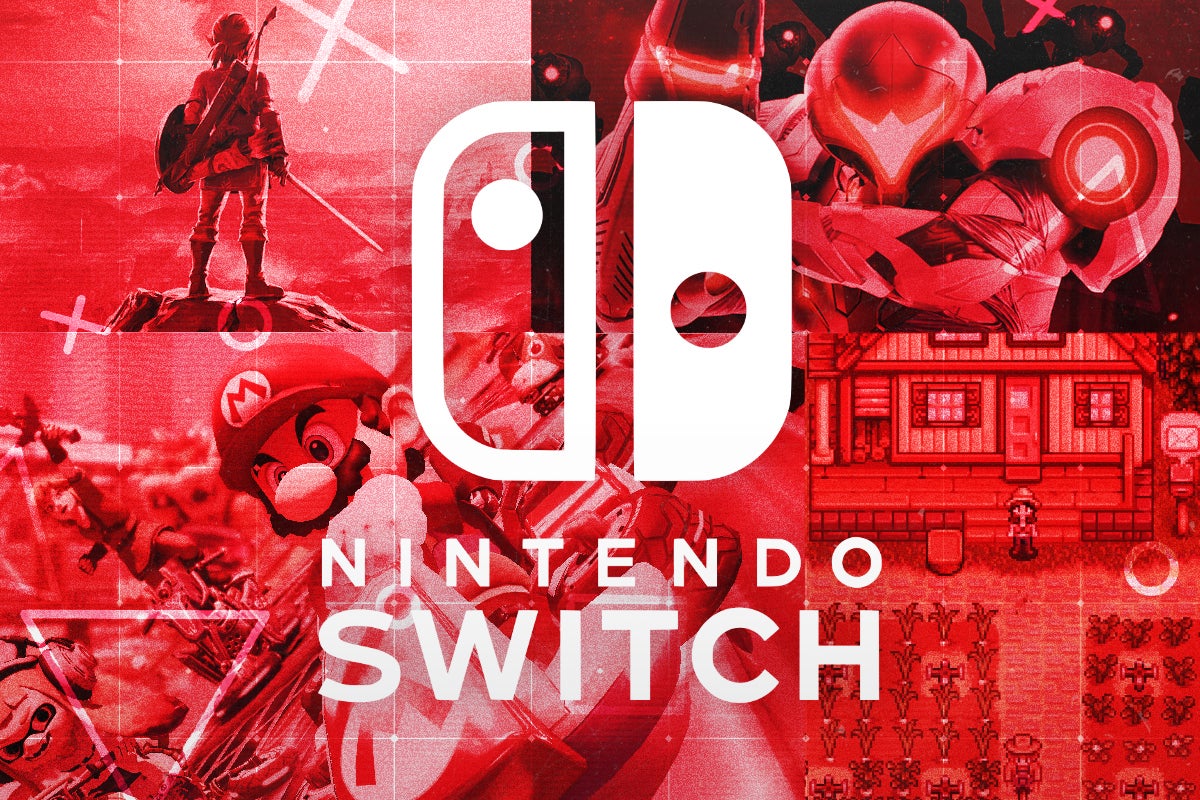Nintendo Switch OLED Review
Still a great portable three years on





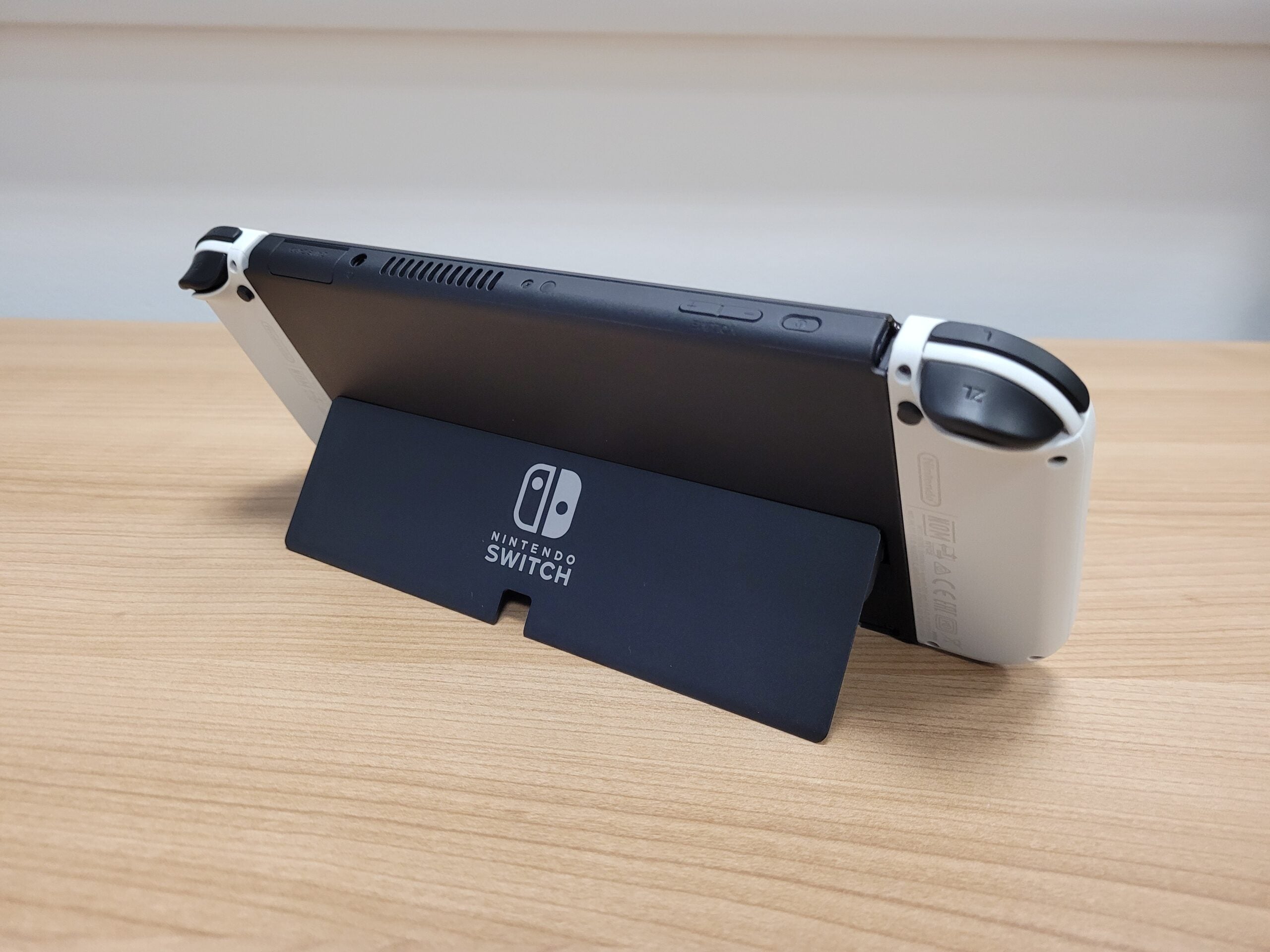

Verdict
The Nintendo Switch OLED is a fantastic upgrade for portable play, with the new screen looking significantly better than the one on the standard model. But with no substantial upgrade for docked mode, it isn’t a worthwhile purchase for those who just want a home console for the TV.
Pros
- OLED screen offers a huge upgrade
- Bigger screen, but still very portable
- Stand is a lot sturdier now
- Increased storage capacity
Cons
- No performance upgrade
- No substantial upgrades for docked mode
Key Features
- OLED screen:The OLED panel allows for improved brightness, contrast and colour accuracy
- Larger 7-inch screen:Nintendo has increased the size of the display by squeezing down the chunky bezel
- New stand:Larger and sturdier stand for table-top play, with numerous angles supported
Introduction
The Nintendo Switch OLED is not a sequel to the standard Switch, but instead a mid-cycle refresh with an upgraded screen for enhanced picture quality.
This means the Switch OLED can play all of the same games as its older sibling, and even offers an identical performance with the exact same chip powering the portable. With the original Switch launching all the way back in 2017, this means the graphics power on offer here is severely out of date.
This is only made more obvious with the avalanche of new gaming handheld releases in the past few years, including the Steam Deck, ROG Ally and Lenovo Legion Go. Plus there are rumours that we could see the Nintendo Switch 2 arrive before the end of the year.
With all of the above taken into consideration, is the Nintendo Switch OLED still worth a buy? After spending three years with the portable, here’s my verdict.
Screen
- The OLED screen is a massive upgrade on LCD
- Screen size increased to 7-inches
- Screen resolution is capped to 720p
Let’s focus on the most exciting feature first: the titular OLED screen. I’m very familiar with OLED screen technology, seeing it implemented on various laptops and TVs, and yet I was still surprised by how big an impact it has had on the Nintendo Switch.
The OLED panel allows for better contrast and colour accuracy, resulting in a picture that’s far superior to the original portable – the difference is night and day, even on the homescreen. The Switch OLED panel looks brighter, with bolder and more vibrant colours popping out of the display.
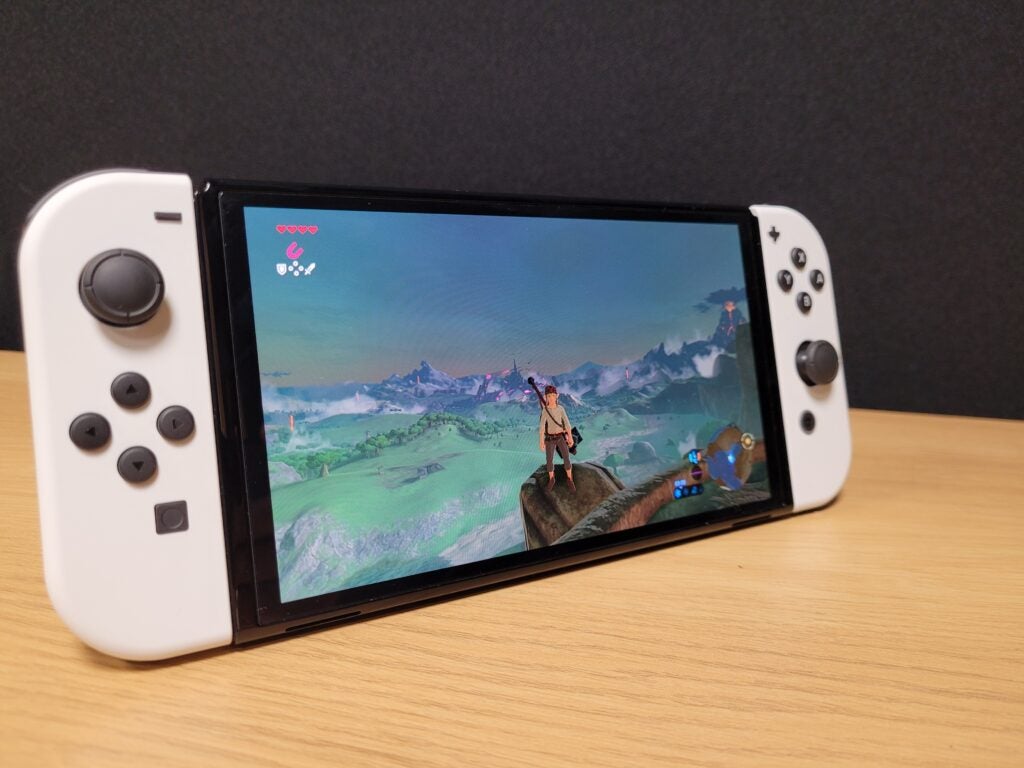
The improved colour accuracy is also noticeable, displaying a pure white background compared to the reddish tint of its predecessor. Playing the opening sequence of Breath of the Wild hit a lot harder with the OLED model, presenting added detail in the sky and lush green forest, while showering a greater contrast between the sunbeams and shadows in a cave.
I also played through the entirety of Metroid Dread on the Switch OLED, and was stunned by how good the 3D cutscenes looked with the improved vibrancy that the new screen allows for – this feels like a significant upgrade, arguably more so than any resolution bump could offer.
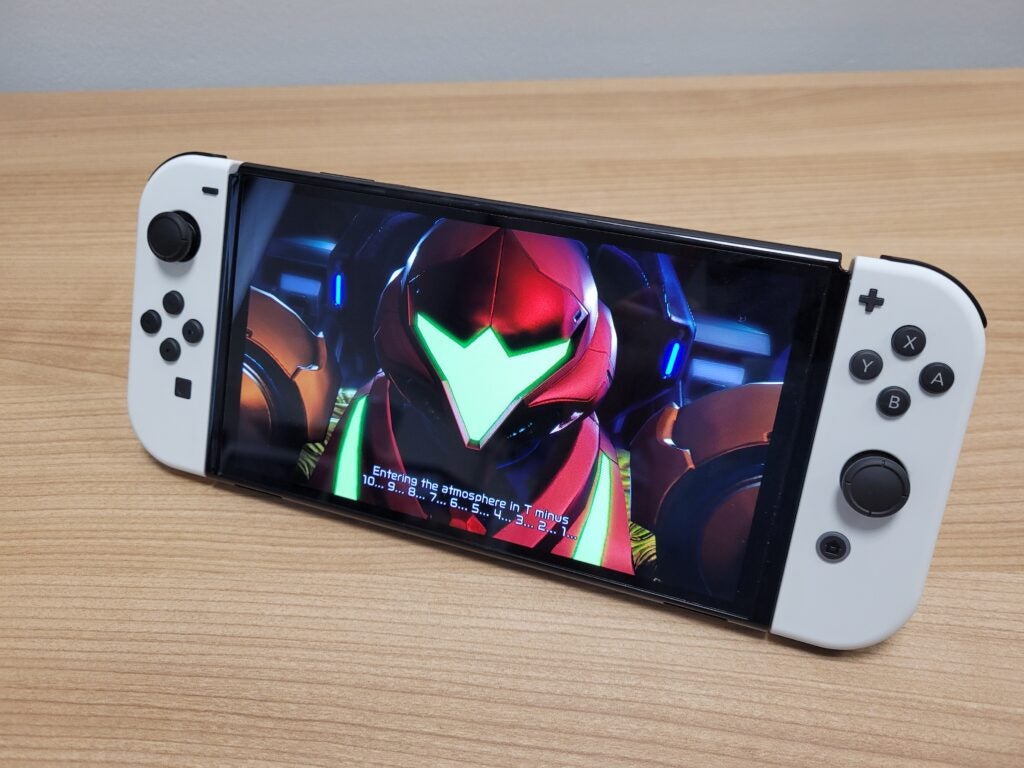
Of course, there are notorious downsides with OLED screens – burn-in issues have seen images scorched into the display of old TVs following extended time displaying a static image. But I don’t see that being a problem here. The Switch OLED will automatically go to sleep if you haven’t used the device for five minutes or so, and OLED technology has come a long way in recent years to remedy this problem.
Nintendo has also increased the screen size for the OLED model, boosting from 6.2-inches to 7-inches. That doesn’t sound like much of an improvement, but the added width makes a huge difference. Personally, I was very happy with this aspect as I’m transitioning from the dinky Switch Lite.

Nintendo has smartly shaved down the system’s bezel in order to accommodate the larger screen, so there’s hardly any size or weight difference at all between the original and OLED Switches. Even old Joy-Cons are supported here, so you won’t need to go out and buy new controllers – although this does also mean the Joy-Con drift hasn’t been resolved.
The screen resolution remains the same at 720p, but I don’t feel like that’s a problem at this screen size. I didn’t ever notice the individual pixels when playing games in portable play, and I personally wouldn’t want a boost in pixels if it meant a larger design or shorter battery life.
Design
- New stand is better at propping up the Switch
- Remains as portable as the standard model
- Dock has seen a redesign, with Ethernet port included
The new OLED screen is going to grab all the headlines, but Nintendo has also made some tweaks to the design to make it feel more premium.
The most notable upgrade in this respect is the new stand – it now stretches across the entire rear of the portable for a far sturdier hold, and it supports multiple angles for added versatility. My original Nintendo Switch would often topple over when propped up on a train table, but this hasn’t been an issue with the OLED model.

The Switch OLED is still made of plastic in the main chassis, but it feels far nicer than its predecessor, with a firmer build that’s better able to hide fingerprint smudge marks. While the OG Switch arguably felt like a toy, this comes across as a premium product intended for a more mature audience.
The speakers have also been enhanced, with louder and more detailed sound. I was so impressed with the portable’s audio quality that I was happy to play without my headset at home. Bluetooth is also now supported across all Switch consoles for wireless headsets.

All of the same buttons and ports feature here, including a power button, volume switchers, headphone jack, USB-C charging and microSD storage expansion. There’s also a game cartridge slot – but, as someone with very short fingernails, I’ve found the game cartridge slot to be more difficult to prise open.
Nintendo has also redesigned the dock. It feels a lot better now, with a sturdy plastic build. The rear can easily be snapped off to reveal all of the interior ports, including the new LAN port that allows for a wired internet connection without the need of an adapter. The new design also enables cable routing, which will no doubt please those who want a clean setup.

The functionality remains the same, with the Switch slotting nicely into the USB-C dock to output an image to the TV. Disappointingly, however, there isn’t a more powerful chip inside the dock, which means you’re still only getting a 1080p resolution for TV mode.
Performance and battery life
- No performance upgrade on standard Switch
- 1080p resolution looks rough on large TVs
- Battery life is solid, lasts five hours with Metroid Dread
The biggest disappointment about the Switch OLED is the lack of a performance upgrade – it’s still using the same Nvidia Tegra processor as the original system that launched back in 2017.
For portable play, I don’t think it’s a big issue. First-party games still run smoothly, aside from the odd frame-rate hiccup, and I doubt a resolution boost would make that big of a difference for a screen of this size.
However, it’s a far bigger issue for those who like to play the Switch in docked mode. When connecting my Switch to my 55-inch OLED TV, I was disappointed to see how visible the pixels were for Metroid Dread, resulting in a fuzzy picture quality that isn’t present in portable mode. This will be even more obvious if you’re accustomed to 4K gaming on the PS5 or Xbox Series X.
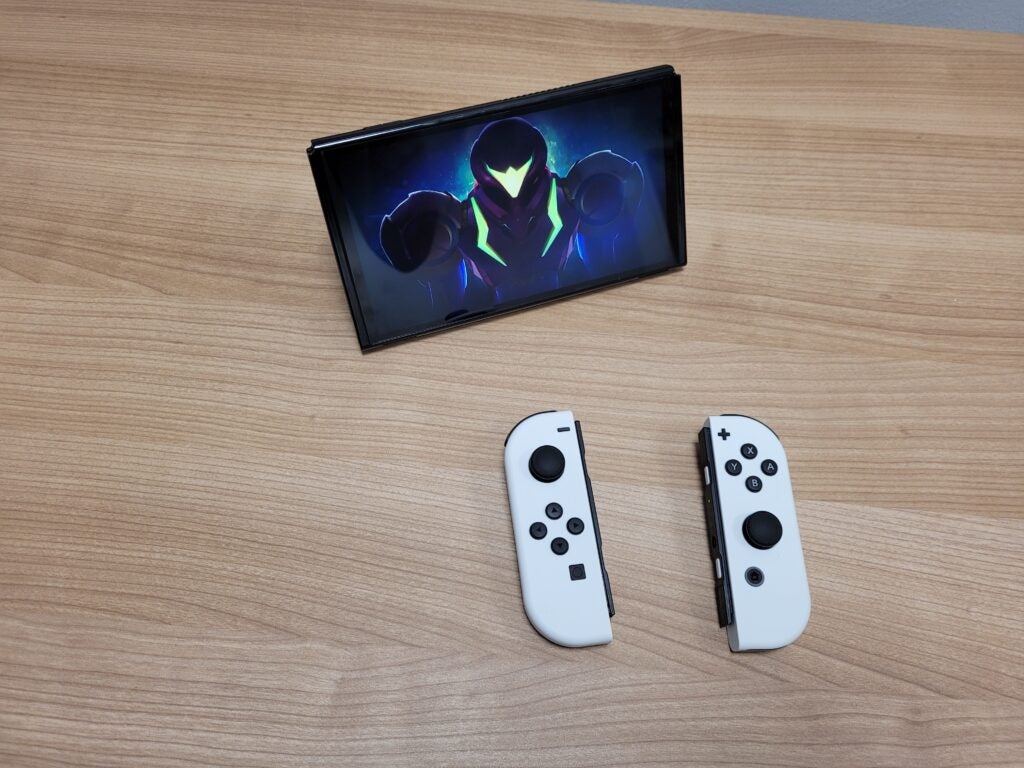
Aside from a new Ethernet port and boosted storage capacity, there’s no incentive for people to upgrade to the Switch OLED if they mainly play in docked mode. A more powerful GPU baked into the dock would have fixed this, theoretically enabling the Switch to upscale the resolution when connected to the TV. But I assume Nintendo didn’t want to push the price up further or is holding it back for the rumoured Switch 2.
This is an even bigger issue considering an increasing number of Switch games are only playable via the cloud. And with the PS5 and Xbox Series X encouraging developers to make even more GPU-intensive games, the Switch has struggled to keep up when it comes to third-party game support.
If you’re looking for an affordable games console and aren’t fussed about portability, I suggest looking at the Xbox Series S instead. It’s cheaper, significantly more powerful and supports a greater number of third-party games.

Nintendo claims the Switch OLED offers four-and-a-half to nine hours of battery life, depending on which game is being played. That’s the same battery life as the most recent version of the standard Switch, but a big improvement on the original iteration that launched in 2017.
These figures seem accurate according to my time with the device, with the Switch OLED lasting five hours while playing Metroid Dread before requiring a recharge. Breath of the Wild saw a similar result, with two hours of playing seeing the battery fall to 63%. You can expect even better stamina if you stick to less taxing games such as Celeste or Slay the Spire.
I’m pleased with the Switch OLED’s battery life. Asking for anything better would arguably be unreasonable for a gaming portable of this pedigree. It’s got far better stamina than more powerful portables such as the Steam Deck and ROG Ally.
Games and software
- Excellent library of first-party games
- Some third-party games only available via the cloud
A console is only as good as the games it has on offer, so where does that leave the Nintendo Switch OLED? Nintendo’s new console supports every single game available on both the original Switch and Switch Lite.
The Switch has a fantastic library of games, from early launches such as Super Mario Odyssey, Breath of the Wild, and Mario Kart 8 Deluxe, to excellent new releases such as Tears of the Kingdom, Metroid Prime Remastered and Splatoon 3. The Switch also continues to be a stellar platform for indie games, with the likes of Hades, Undertale, Cuphead, Stardew Valley and more.

Those hoping to play the latest and greatest AAA games may be out of luck though, as the Switch’s ageing processor has fallen so far behind the PS5 and Xbox Series X that it’s now struggling to run modern games.
Recent big games such as Elden Ring, Star Wars Jedi: Survivor and Diablo 4 have failed to materialise on the Switch, despite being available on all other platforms.
Nintendo has tried to work around this by adopting cloud technology to get the likes of Marvel’s Guardians of the Galaxy and Hitman 3 working on the Nintendo Switch. But such tactics are hardly ideal for a portable console, as you need a consistent high-speed internet connection to ensure a smooth performance.
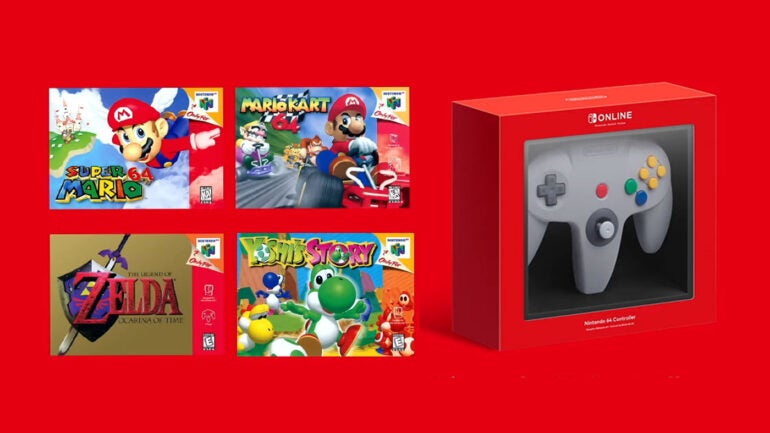
On the bright side, Nintendo has a great catalogue of digital games from retro consoles available through the Nintendo Switch Online library. Subscribing to the standard Switch Online service ($19.99/£31.49/€34.99 per year) will gain you access to NES and SNES games, while upgrading to Switch Online + Expansion Pack ($49.99/£59.99/€69.99) will unlock an even larger library that includes Sega Mega Drive, N64, Game Boy and Game Boy Advance games.
The Nintendo Switch is currently the best way to revisit classic Nintendo games. So if you’ve never played any retro Nintendo games, or you simply fancy taking a trip down memory lane, the Switch is well worth a purchase for this alone.
Outside of gaming, the Switch OLED’s software is the exact same as you’ll find with other Switch consoles. I’m a big fan of its parental controls, plus it’s easy enough to transfer saved data between consoles. However, the same pain points persist, such as a sluggish eShop and the requirement of a separate smartphone app for multiplayer voice chat. In addition, there’s still no sign of trophies, which have been offered by PlayStation, Xbox and PC for a long time now.
Latest deals
Should you buy it?
You want Nintendo’s very best gaming portable
The jump in picture quality is very much worth the upgrade, if you can nab a good trade-in deal for your current Switch.
You play primarily in TV mode
Aside from a new Ethernet port, there are no upgrades here that will improve the experience in TV mode.
Final thoughts
I’ve been really impressed by the Nintendo Switch OLED. The screen’s picture quality is a far greater upgrade than I expected, while additional improvements such as a sturdier stand, wider screen and more premium design all help to ensure this is the absolute best gaming portable device you can buy right now.
However, the lack of performance upgrade means that it isn’t a worthwhile purchase if you spend most of your time playing the Switch in docked mode. It feels outdated running at 1080p, and it’s concerning that an increasing number of third-party games are only supported via the cloud.
If you want a more powerful portable that can handle modern third-party games, then I recommend you check out the likes of the Steam Deck and Asus ROG Ally instead.
How we test
In order to test the Nintendo Switch OLED, we played a number of games and compared it to the visual offered by the standard Switch.
We also checked out all of the new advertised features, including the stand and speakers.
Played multiple games to test performance
Compared the screen quality to the standard Switch model.
Drained the battery to test out its stamina.
FAQs
The Nintendo Switch OLED does not support 4K in either portable or docked mode.
The new upgrades include an OLED screen, larger display, extra internal storage, improved stand and an Ethernet port on the dock.


